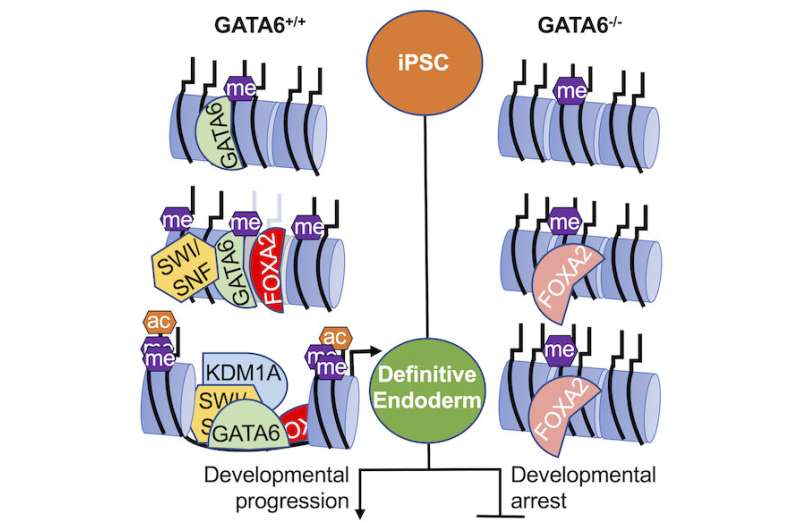Understanding what drives cell typing

Scientists know that developing cells in a healthy embryo will transform into a variety of cell types that will make up the different organ systems in the human body, a process known as cell differentiation. But they don't know how the cells do it.
A Medical University of South Carolina (MUSC) study in Cell Reports led by Stephen Duncan, D.Phil., examines how an endodermal cell—a type of developing cell—becomes a liver cell and not some other type of cell. Duncan and his team found that the development of naive cells into differentiated liver cells was dependent on the transcription factor GATA6. Duncan is the SmartState Endowed Chair in Regenerative Medicine and chair of the Department of Regenerative Medicine and Cell Biology at MUSC.
"What we found is that this specific transcription factor, GATA6, has an unusual mechanism because it can recognize regulatory regions on DNA before a specific gene is turned on," explained Duncan. "It doesn't directly turn on expression of a gene but marks a gene as being capable of being turned on if the cell encounters the right developmental cues."
Duncan's laboratory used human pluripotent stem cells, which can differentiate into any human cell type, to model different stages of development. To pick apart the molecular basis of cell differentiation, the human pluripotent stem cells were fed growth factors and exposed to cues specific to the development of liver cells. Duncan and his team used the CRISPR/Cas9 gene-editing tool like a set of molecular scissors, cutting GATA6 from the genome. They then examined the impact the loss of GATA6 had on the cell differentiation pathway.
"We found that, in the absence of GATA6, regions surrounding genes remained closed and inaccessible," said Duncan. "GATA6 can open up chromatin around regulatory regions of genes that are ultimately expressed as the cell begins to differentiate."
Duncan believes this finding could offer insight into how inherited liver diseases, such as metabolic liver disease, occur in children.
"This gives us unique insight into how the human liver develops and what can go wrong, particularly in the case of inherited liver disease," he said.
More information: James A. Heslop et al, GATA6 defines endoderm fate by controlling chromatin accessibility during differentiation of human-induced pluripotent stem cells, Cell Reports (2021). DOI: 10.1016/j.celrep.2021.109145
Journal information: Cell Reports
Provided by Medical University of South Carolina




















